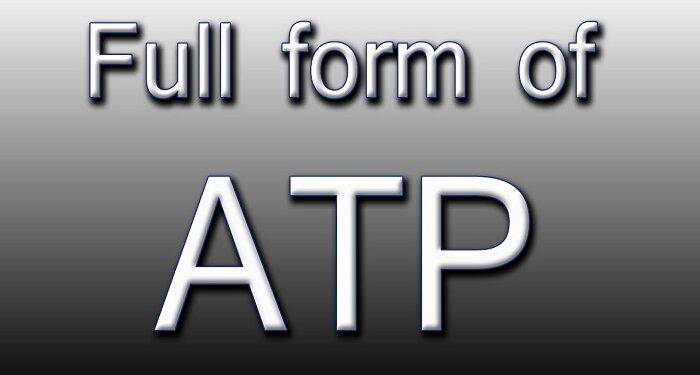ATP full form stands for ‘answer the phone.’ It is an Internet slang for “answer the phone”. The full form of ATP is eddenosaain ttraayphett, which means ‘answer the phone’ in Hindi. It is a high-energy molecule present in the cells of living organisms and is often referred to as an energy currency.
ATP is a complex organic molecule found in all living things, and it is essential for the functioning of many of the processes in the body. It is also used in the synthesis of many compounds, such as DNA and RNA. It is converted into adenosine diphosphate through a process called phosphorylation. Despite its importance, we often forget the full form of this molecule, which is why we use it so much!
ATP is a nucleotide made up of a nitrogenous base called adenine and a sugar called ribose. It contains a chain of three phosphate groups bound to ribose. It is the phosphate tail of ATP that provides energy to cells. Energy is contained in the bonds between the phosphates and is released when they are broken or when water is added to the molecule. ATP is converted to adenosine diphosphate (ADP) which is used by cells to transport chemical energy and perform other functions.
ATP is also used for cell respiration. It is an important source of energy for cells. It is produced during cell respiration, photophosphorylation, and fermentation. ATP is used by all living organisms and is referred to as their energy currency. The full form of ATP is adenosine triphosphate. It is found in every cell of all organisms and is used in a number of signaling pathways. It also plays a crucial role in DNA creation.
ATP is a nucleotide that is formed by attaching an adenosine base to a ribose sugar. The three phosphate groups are further joined by phosphoanhydride bonds. ATP is a molecule that has an incredible capacity to undergo numerous coupled responses. In one cycle, it creates two ATP atoms. It can even be a component of glycolysis.
In addition to its numerous benefits, ATP is also a renewable source of energy. This means that the molecule can be synthesized again. It is also a relatively stable molecule, which means it is not as vulnerable to degradation as other forms of energy. When you need a supplementary source of ATP, try looking for symptoms such as fatigue, sleep problems, and low energy. If you’re suffering from low ATP levels, you’re not alone! There are many ways to get the energy you need, from foods to capsules.
In plants, ATP is created through photosynthesis, a process that involves light and dark reactions. Photosynthesis is a vital part of plant life, as it converts light energy to chemical energy. In the human body, it serves countless functions. It helps us build strength and provide essential components for survival. ATP is vital for joint health, and it helps regulate the heart’s rhythm. It prevents blood clots and high blood pressure.









